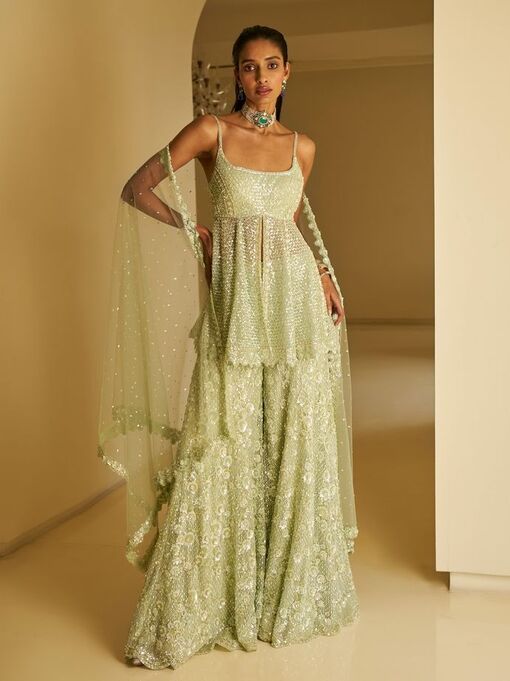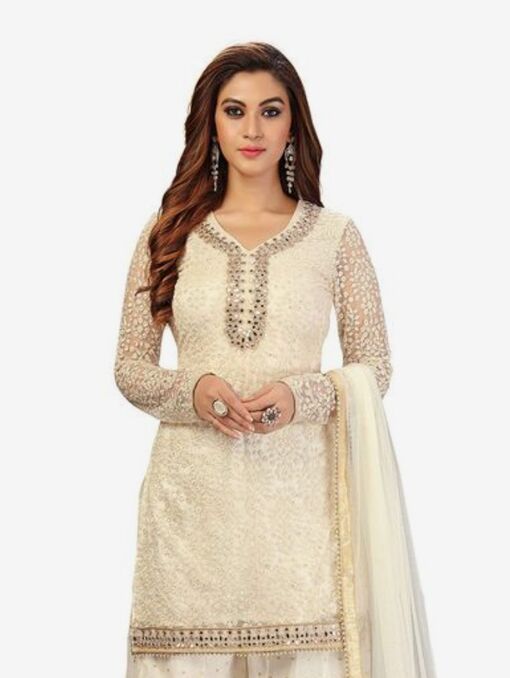PLEASE RSVP BY NOVEMBER 15TH, 2024

Magdalena & Kanvar
PLEASE RSVP BY NOVEMBER 15TH, 2024
Magdalena & Kanvar
More About Indian Attire
Saree

A sari, also spelled saree or sadi, is a traditional women's garment from the Indian subcontinent that is worn as a robe over the body. It is a long, rectangular piece of fabric that is typically 4.5–9 yards long and 24–47 inches wide, and is often made of silk, cotton, or synthetic cloth. The sari is wrapped around the body, with one end attached to the waist and the other end resting over the shoulder like a shawl. The end can also be left hanging or used as a hood
Lehenga

Lehenga is a three-piece ensemble consists of the actual lehenga, a long ankle-length skirt, a well-fitted blouse top known as the choli, and a scarf to drape around the outfit, known as the dupatta
Sharara Suit

An Indian sharara suit is a classic, elegant, and versatile outfit that consists of a kameez or kurta (top blouse) paired with a dupatta (scarf) and wide-legged pants that are pleated, ruffled, or gathered at the bottom
Gharara Suit

A gharara suit is a traditional Indian outfit that consists of a short tunic, a veil, and wide-legged pants that flare out at the knee. The pants are called gharara and are often made from silk brocade and can be over 12 meters of fabric long. The knee area, called the gota, is often embroidered with zari and zardozi work. Gharara are a lighter alternative to a lehenga.
Kurta

A kurta is a long, loose shirt commonly worn in South Asia. In Indian cities, it's very common for both men and women to wear kurtas with pants. A kurta is a kind of tunic, or long, collarless top. In various South Asian countries, kurtas are worn with loose trousers called shalwars or tighter pants known as churidars
Please note the weather in Goa in January can reach 90 degrees Fahrenheit. Please choose your attire accordingly.